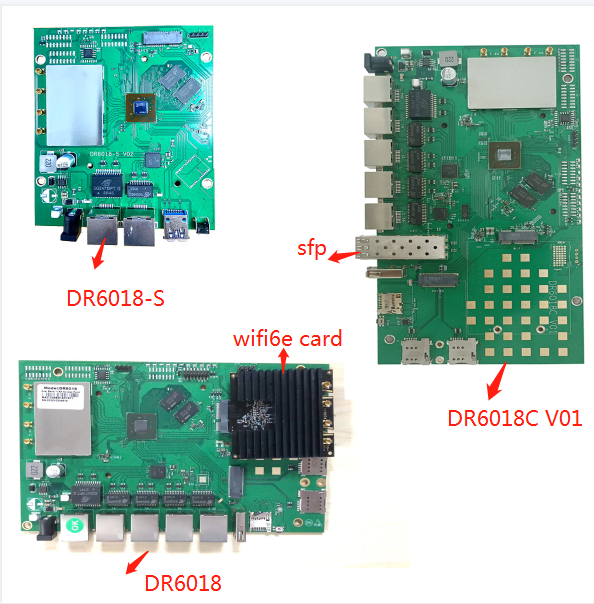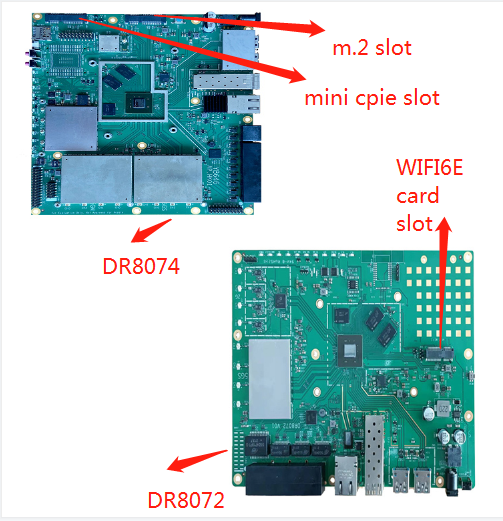wifi6 router/based on QSDK IPQ6010/IPQ6018/IPQ5018/IPQ8072/IPQ8074 collection support QCN9074 openwrt
wifi6 router/based on QSDK IPQ6010/IPQ6018/IPQ5018/IPQ8072/IPQ8074 collection support QCN9074 openwrt
Today I will introduce all the wifi6 routerboard products of Wallys.
The first is the routerboard based on Qualcomm IPQ6010/IPQ6018 chip.
DR6018+DR6018C V01+DR6018-S.
DR6018+DR6018C V01 does not actually have many differences. The only difference is that DR6018C has one more SFP than DR6018, but the SFP can be customized according to customer needs. For example, if I want a 1GB SFP, that is totally fine. .
Compared with the above two routerboards, DR6018-S has fewer Ethernet ports and can only support one QCN9074, M.2 card.
DR6018+DR6018C V01 has five Ethernet ports.
The DR6018-S has only two Ethernet ports and no SFP.
But they are all 2x2 2.4G&5G, support openwrt, support wifi 6e card.
The other three products are not particularly different. It mainly depends on the needs of customers.
The second is to introduce the routerboard based on Qualcomm IPQ5018 chip.

DR5018
Compared with the above three routerboards, its demand will be less, but there are also many customers who need this board.
It also supports wifi6e card, 2X2 2.4G support 2x WiFi 6E Card support BT5.1.
The board itself only has 2.4G, and there is no 5G. This is what everyone should pay attention to.

Let me introduce to you two routerboards that are slightly more expensive than the above four boards.
They are boards based on Qualcomm IPQ8072+IPQ8074 chips, which are more high-end.
DR8072 V01
It is 4x4 2.4G & 5G and supports wifi6e card.
The board itself has its own SFP and three Ethernet ports.
DR8074A (HK01) has a higher specification
IPQ8074A 4x4 2.4G 8x8 5G 802.11ax
The board can support M.2 card or Mini pcie card.
Well, today I will introduce several wifi6 routers here.
Because the project requirements are different, different products will be selected. If the board itself cannot meet your project requirements, you can also inform us of your requirements to see if it can be customized.

Wallys has a 12-year history of R&D, design and production, and has sufficient ability to fulfill different project requirements.
wallys, a technology company that develops, designs and manufactures wireless communications products, has 90% of the world's customers and is a supplier to facebook.
From 802.11n to 802.11ax, it has been moving forward, and has been trusted and supported by more and more customers.
wallys also supports custom development of software and hardware, including customized products.
Skype/EMAIL/Teams:sales@wallystech.com
WEB:https://www.wallystech.com/
Comments
Post a Comment